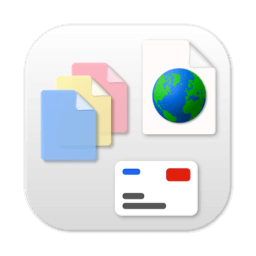

Although SearchBar's list of search engines and websites is much more extensive, and it provides quite a few more features than Searchling, I actually prefer Searchling because it's simple and elegant. Both also provide a hotkey that automatically brings it to the front for quick searching.
URL MANAGER PRO WINDOWS
Both provide floating windows that allow you to search any of a number of search engines or websites. These gems are the freeware utilities Searchling ( ) and SearchBar ( ). I used to think these utilities were, well, silly …until I found a couple that were both unobtrusive and powerful. The result is a plethora of "search assistance" utilities that make searching the Web easier.

Just as it's true that if something exists, someone's trying to find it, it's also true that no matter how few steps it takes, someone wants fewer. It's not too big of a deal, but what if you could just press a key, type in a word or two, and everything else was automatic? Yet the average search goes something like this: go to your web browser, type in the search engine URL (or, if you have the site bookmarked, select the bookmark), type in your search term(s), then wait for the results.
URL MANAGER PRO SOFTWARE
One of the most frequent activities people do when surfing the Web is to search for things: information on Google, products on eBay, news, software updates … if it exists, someone's trying to find it. Although you could just as easily highlight some text and then go to the Services menu in the Apple Menu, having it in the contextual menu is a nice feature. I probably use this feature 20 to 30 times a day! The only drawback is that applications that haven't been updated to use OS X's text engine generally don't work with ICeCoffEE.Īn added bonus of ICeCoffEE is that it adds a Services menu-that includes access to all Services, not just ICeCoffEE- to the text contextual menu (the one you get when you control/right-click on text in a Cocoa application). After installing ICeCoffEE and then logging out and back in, you'll be able to command-click on a URL in any Cocoa application to open it in your default web browser (the one selected in Internet preferences). Nicholas Riley has provided the same functionality in OS X via his freeware ICeCoffEE ( ).
URL MANAGER PRO MAC OS
Mac OS 9 and earlier had a clever third-party extension called ICeTEe that allowed you to command-click on a text URL to open it in your browser. On top of that, what about all those URLs that are in text documents, dialog boxes, and the like? If you're lucky, your e-mail client lets you click on a link to open it in your browser, but some don't. But how often do you find URLs in e-mail messages, text documents, application "About" boxes, or other sources besides web pages? Probably fairly often. You surely get a lot of your URLs right from web pages-you see a link and click on it.


 0 kommentar(er)
0 kommentar(er)
